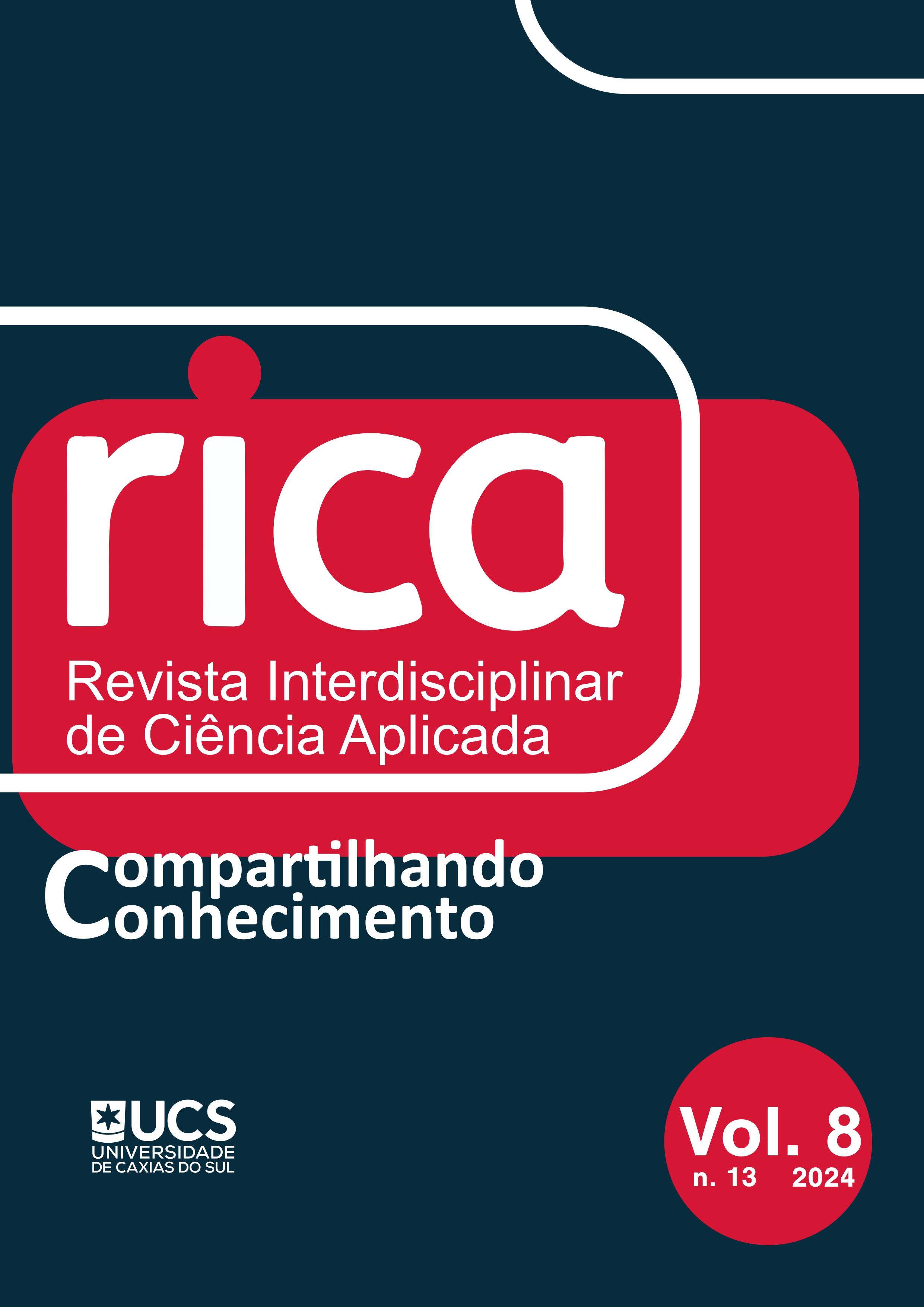Análise comparativa das estratégias atuais de apoio financeiro e alimentar às unidades militares das Forças Armadas da Ucrânia e dos Estados-membros da OTAN
DOI:
https://doi.org/10.18226/25253824.v8.n13.09Palavras-chave:
Normas internacionais, Fornecimento de material, Atos regulamentares e jurídicos, Componentes funcionais, Princípios de formaçãoResumo
A urgência da realização da pesquisa se deve ao fato de que, na sequência da agressão em larga escala da Federação Russa ao território da Ucrânia, um dos problemas urgentes é a questão do apoio material do exército. Com base nisso, o objetivo do trabalho é realizar uma análise comparativa das políticas modernas da Ucrânia e dos países da Organização do Tratado do Atlântico Norte (OTAN) no fornecimento de forças armadas nos aspectos materiais e de produtos. Para isso, foram utilizados métodos como análise lógica, formal-legal, dogmática, hermenêutica jurídica, deduções e outros. No decorrer da pesquisa, destacou-se que a introdução dos padrões da OTAN no setor de segurança e defesa da Ucrânia é uma tarefa difícil, visto que os princípios pós-soviéticos estão atualmente em vigor. Para uma transição bem-sucedida para os padrões da OTAN, é necessário revisar e atualizar abrangentemente o arcabouço legal, bem como desenvolver e implementar atos legais que regulem o sistema de apoio logístico das Forças Armadas da Ucrânia. Constatou-se que a experiência estrangeira na prestação de garantias sociais a militares demonstra que tais garantias constituem um elemento importante da política estatal na área da defesa. Nos países da OTAN, as garantias sociais para militares e seus familiares proporcionam uma ampla gama de benefícios e vantagens que asseguram uma vida digna e o desenvolvimento pessoal. O valor prático dos resultados obtidos reside no fato de que contribuirão para aumentar a eficiência do uso dos recursos estatais, aprimorar o sistema de treinamento de unidades militares e aumentar a autoridade da Ucrânia na arena internacional.
Referências
Horodianska, L.V. (2022). Peculiarities of the systems of financial support for military personnel of Ukraine and NATO member states. In: Collection of Abstracts of the XVIII International Scientific and Practical Conference “Military Education and Science: Present and Future” (pp. 268-270). Kyiv: Military Institute of Taras Shevchenko National University of Kyiv.
Tsyhanok, V.M. (2023). Financial support of military personnel is one of the most important elements of their financial situation and motivation in the service. Uzhhorod National University Herald. Series: Law, 1(78), 333-337.
Bykov, O.L. (2023). State policy in the sphere of social security of military personnel. Sumy: Sumy National Agrarian University.
Lototska-Dudyk, U.B., Krupka, N.O. & Chorna, V.V. (2023). The current state and organization of food for servicemen of the Armed Forces of Ukraine in the conditions of Russian aggression against Ukraine. Scientific Bulletin of the Uzhhorod University. Series “Medicine”, 1(67), 89-94.
Bosovska, M.V., Poltavska, O.V. & Domishche-Medyanyk, A.M. (2023). Peculiarities of food for military servants in the conditions of Russian aggression. In: Proceedings of the XVI International Interdisciplinary Scientific and Practical Conference “Modern Aspects of Human Health Preservation” (pp. 70-76). Uzhhorod: Uzhhorod National University.
Chorna, V.V., Lototska-Dudyk, U.B., Podolian, V.M., Ivashkevich, Y.M. & Tomashevskyi, A.V. (2023). Requirements for the newest individual rations for servicemen of the Armed Forces of Ukraine and NATO countries. Ukrainian Journal of Military Medicine, 1(4), 83-93.
Decision of the National Security and Defense Council of Ukraine No. 473/2021 “On the Strategic Defence Bulletin of Ukraine”. (2021). Retrieved from https://zakon.rada.gov.ua/laws/show/n0063525-21#Text
Law of Ukraine No. 2469-VIII “On National Security”. (2018). Retrieved from https://zakon.rada.gov.ua/laws/show/2469-19#Text
NATO. (2016). Comprehensive assistance package for Ukraine. Retrieved from https://www.nato.int/nato_static_fl2014/assets/pdf/pdf_2016_09/20160920_160920-compreh-ass-package-ukraine-en.pdf
NATO. (2014). STANAG 6001: Language proficiency levels. Retrieved from https://www.natobilc.org/files/file/6001EFed05.pdf
Zarazhevska, S. (2022). Expenditures of the 2022 state budget increased by almost 400 billion UAH. The money will go to the army. Will it affect the exchange rate and inflation? Retrieved from https://forbes.ua/money/vidatki-derzhbyudzhetu-2022-zrosli-mayzhe-na-400-mlrd-grn-koshti-pidut-na-armiyu-chi-vpline-tse-na-kurs-ta-inflyatsiyu-20102022-9158
Belcher, O., Bigger, P., Neimark, B. & Kennelly, C. (2020). Hidden carbon costs of the “everywhere war”: Logistics, geopolitical ecology, and the carbon boot‐print of the US military. Transactions of the Institute of British Geographers, 45(1), 65-80.
Gechert, S., Paetz, C. & Villanueva, P. (2021). The macroeconomic effects of social security contributions and benefits. Journal of Monetary Economics, 117, 571-584.
Dieng, M. (2019). The Multi-National Joint Task Force and the G5 Sahel Joint Force: The limits of military capacity-building efforts. Contemporary Security Policy, 40(4), 481-501.
Mills, C. (20230. Military assistance to Ukraine since the Russian invasion. London: House of Commons Library.
Semenenko, O., Marko, I., Chernyshova, I., Koverga, V. & Pekuliak, R. (2021). Methodological aspects of the military-economic significance of agriculture and modern problems of military food resources in Ukraine. Scientific Horizons, 24(8), 81-97.
Shea, E. & Jaroszewicz, M. (2021). Opening in times of crisis? Examining NATO and the EU’s support to security sector reform in post-Maidan Ukraine. East European Politics, 37(1), 159-181.
Trebesch, C., Antezza, A., Bushnell, K., Frank, A., Frank, P., Franz, L., Kharitonov, I., Kumar, B., Rebinskaya, E. & Schramm, S. (2023). The Ukraine support tracker: Which countries help Ukraine and how? Retrieved from https://www.econstor.eu/bitstream/10419/270853/1/KWP2218v6rev.pdf
Zaharia, P. (2019). Analysis of existing constraints in the armed forces infrastructure. Bulletin of “Carol I” National Defence University, 2, 40-47.
Jacuch, A. (2020). Countering hybrid threats: Resilience in the EU and NATO’s strategies. Copernicus Journal of Political Studies, 1, 5-26.
Berejikian, J. & Justwan, F. (2022). Defense treaties increase domestic support for military action and casualty tolerance: Evidence from survey experiments in the United States. Contemporary Security Policy, 43(2), 308-349.
Samaras, C., Nuttall, W.J. & Bazilian, M. (2019). Energy and the military: Convergence of security, economic, and environmental decision-making. Energy Strategy Reviews, 26, 100409.
Hart, C. & Fuoli, M. (2020). Objectification strategies outperform subjectification strategies in military interventionist discourses. Journal of Pragmatics, 162, 17-28.
Trad, A. (2022). Transformation projects and virtual military strategy. International Journal of Higher Education Management, 8(2), 14-35.
Downloads
Publicado
Como Citar
Edição
Seção
Licença
Copyright (c) 2024 Semenenko et al.

Este trabalho está licenciado sob uma licença Creative Commons Attribution 4.0 International License. Autores mantém os direitos autorais e concedem à revista o direito de primeira publicação, com o trabalho simultaneamente licenciado sob a Creative Commons Attribution License que permitindo o compartilhamento do trabalho com reconhecimento da autoria do trabalho e publicação inicial nesta revista.






